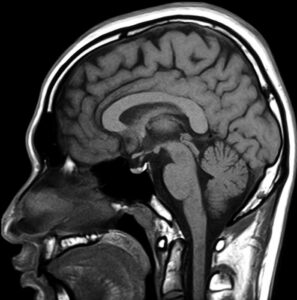Magnetic resonance imaging (MRI) uses powerful magnetic fields and radiofrequency to produce high-resolution, detailed images of the organs, tissues, and skeletal system. These scans are non-invasive and do not use ionising radiation.
Patients are required to lie on a bed in a tunnel, during which they need to lie still to avoid motion artifact. Movement will compromise the scan quality. Patients will be offered earplugs to drown out the machine’s loud tapping, thumping sounds. Although MRIs are painless, patients with injuries or painful clinical conditions may experience some discomfort. Communication with the radiographer is possible via an intercom.
Some scans may require an injection of contrast media, gadolinium or primovist. The radiologist or radiographer will insert an intravenous catheter (IV line) into a vein in the patient’s hand or arm.
